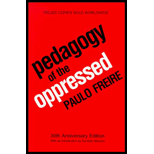Student-centered music instruction.
In a student-centered educational setting, the student’s needs are considered first. What the student wants to learn becomes important as the student is instrumental in selecting and organizing the content. The student also helps to determine how time is used and her voice is heard as much, if not more than the teacher’s. The arrangement of the room is designed with the student’s best interests in mind and the teacher maintains the conscious idea that the student’s education is the most important reason they are there at all.
In the teacher-centered model, all repertoire is selected by the teacher, which results in a lack of interest in the student and a possible inability to even recall the music. In the student-centered model, we take Dewey’s progressive education model (1938) a step forward. The content is not just what the student needs, but is cooperatively selec ted by the student, with assistance from the teacher, from the music that the student loves. The teacher then places the music in a logical order with the help of the student to maximize the learning potential. The content can sometimes become dynamic as the student’s taste changes over time and the process can be repeated as many times as needed, developing a personalized system of instruction as Fred Keller proposed in 1968 (Driscoll, 2005). This is a greater time and resource commitment for the teacher, but in the end results in greater appreciation and realized potential in the student because the music is familiar and the schemata is already in place. This, coupled with a greater motivation to practice results in a greater ease of learning.
ted by the student, with assistance from the teacher, from the music that the student loves. The teacher then places the music in a logical order with the help of the student to maximize the learning potential. The content can sometimes become dynamic as the student’s taste changes over time and the process can be repeated as many times as needed, developing a personalized system of instruction as Fred Keller proposed in 1968 (Driscoll, 2005). This is a greater time and resource commitment for the teacher, but in the end results in greater appreciation and realized potential in the student because the music is familiar and the schemata is already in place. This, coupled with a greater motivation to practice results in a greater ease of learning.
In the teacher-centered model, students are required to practice exercises without context with little success. In the student-centered model teachers are called upon to do what the past masters have done and dynamically draw these same exercises out of the student-selected content so the student can see the context and the practice becomes meaningful. As the student progresses, patterns emerge that have been seen before in different contexts. It is the teacher’s job to isolate these again and help the student to learn to see these patterns themselves. From a situated cognitive perspective allows for greater ease of transfer (Brown, Collins, Duguid, 1989). This kind of practice not only helps the student to more fully understand their music, but also increases their critical thinking skills.
In the teacher-centered system, the teacher often resorts to shame as a punishment, making the student feel bad for not practicing, even though, in many cases, it is actually the teacher’s fault. In the student-centered system, the teacher does not resort to shame. Instead, if a child does not practice, it is assumed that the child was motivated but there were circumstances that prevented her from doing so. If the circumstance that was responsible was actually a lack of motivation, it becomes the teacher’s job to find that which will inspire the student to practice again. In the end, if the child simply does not want to play music, or perhaps, wants to try a new instrument, there is no shame.
In the teacher-centered system, students sometimes lack a sense of progression. In the student-centered system, progression is celebrated and recognized regularly. It is the teacher’s job to help the student understand their accomplishments. In the absence of recognition of accomplishment, students may want to move too quickly through their selected repertoire as a way of feeling accomplished. The teacher needs to be vigilant in keeping the balance between the student’s need for growth and desire for advancement. If the student insists, perhaps a part of a new piece can be started while previous work is continued, but it is important that the student understands, appreciates, and is an integral part of the decision.
In the teacher-centered system, the student practices alone. In the student-centered system, communities of practice (Wenger, 1998) are always encouraged. The first level of this community is the family, who are invited into lessons and encouraged to learn the instrument with the student to act as their support at home. Usually, with younger students it’s a parent or older sibling, who is shown, by the student in the lesson, the music she is working on. At home, if the student encounters any difficulties, the family can put their knowledge together and overcome the difficulty together. The second level is the student’s friends. If the student’s friends play other instruments, study with other teachers, or do not study at all, the teacher can still help to bring them together as a community of practice, inviting them into lessons and helping them to learn the same music and play as an ensemble. This introduces another motivation as the student works to learn music with her friends. Performing music is the perfect social learning environment, and has proven to be an effective one. The final level is to invite all a teacher’s students into a large group lesson, allowing the students to get to know each other’s ability and learn from each other much like Vygotsky argued with his social development theory (1978). Students of different skill levels should be allowed to share and learn from each other, which, as a result, creates a richer pool of knowledge and experience to help the student grow.
In a teacher-centered system, the teacher’s ideas are more important than the students. In the student-centered system, the student’s conceptions are valued by the teacher as possible solutions. The teacher offers other interpretations as part of the student’s learning experience but it is the student’s choice to interpret a piece however she wants.
Further, to increase the student’s learning experience, the teacher adds elements of creativity and problem solving. Using the elements the student has learned, she is encouraged to create new music or modify existing music. This exercise helps to deepen the student’s understanding of the fundamentals of how music works. Students are also asked to struggle with learning music independently. During her time away from lesson she will figure melodies or chords by ear, to the best of her ability like the students in Schoenfeld’s classroom (Brown, Collins, Duguid, 1989) or in the spirit of Kapur’s idea of productive failure (2011). The teacher, during the next lesson session, will help her to find the right notes if there was any difficulty or misconception, which there often is in music, or will recognize her success and move her to a more difficult challenge. This is a talent that will prove invaluable to her in the future as she moves from teacher assisted learning to self learning. In a student-centered learning environment, I believe it is the teacher’s job to eventually render himself obsolete.
Conclusion.
Within the student-centered learning, to facilitate the most potent learning environment, important elements of the system include the importance of progressive education (Dewey, 1938), the student’s autonomy, competency, and relatedness (Deci and Ryan, 2000), working in a community of practice (Wenger, 1998), social learning and the zone of proximal development (Vygotsky, 1978), the importance of situated cognition and the movement from novice to expert (Brown, Colins, Duguid, 1998) and productive failure (Kapur, 2011). This should not be the end. A system that becomes static eventually dies. I think a student-centered learning system needs the flexibility to remain dynamic to truly remain in the best interest of the student.
References:
Bransford, J.D., Brown, A.L., Cocking, R.R., (2000). How People Learn: Brain, Mind, Experience, and School, Washington, DC, National Academy Press
Brown, J.S., Collins, A., Duguid, P. (1989). Situated Cognition and the Culture of Learning. Educational Researcher, Vol.18, No.1, (Jan – Feb) 32 – 42
Deci, E.L., Ryan, R.M. (1985). Intrinsic Motivation and Self-Determination in Human Behavior. New York, NY, Plenium Press
Dewey, J (1938). Experience and Education. New York, NY, Kappa Delta Pi
Driscol, M.P., (2005). Psychology of Learning for Instruction, Third Edition, Florida State University, Pearson
Kapur, M. (2011). A Further Study of Productive Failure in Mathematical Problem Solving: Unpacking the Design Components, Instructional Science, Volume 39, Issue 4 , pp 561-579
Vygotsky, L.S., (March 7, 1978). Mind in Society: The Development of Higher Psychological Processes, 14th Edition, Cambridge, MA, Harvard University Press
Wenger, E. (1998). Communities of Practice: Learning, Meaning, and Identity, New York, NY, Cambridge University Press
 suggests that subjective emotional ratings might have been more subject to cultural influences than physiological responses to the stimuli.”
suggests that subjective emotional ratings might have been more subject to cultural influences than physiological responses to the stimuli.”




